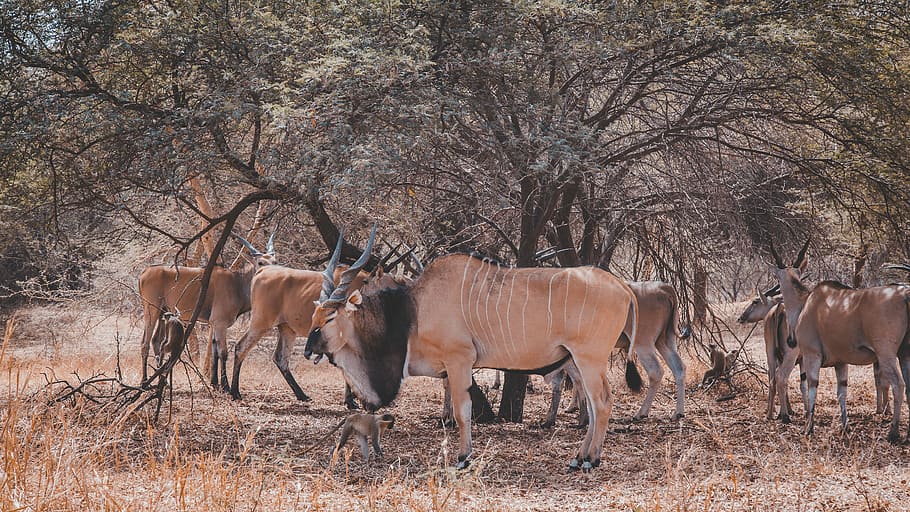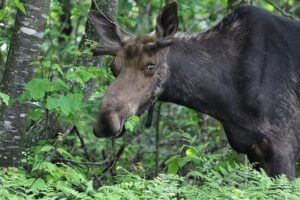
Animals in a Woodland: A Symphony of Life Among the Trees
Introduction
The woodland, a realm of whispering leaves, dappled sunlight, and rustling undergrowth, is a haven for a diverse array of creatures. Within this enchanting ecosystem, animals of various sizes and species coexist, creating a delicate balance that sustains the magic of the woods. In this exploration, we delve into the captivating world of woodland creatures, from the smallest insects to the majestic mammals that call the forest their home.
Animals in a Woodland
Biodiversity in the Woodland
Woodlands are rich tapestries of biodiversity, hosting an incredible variety of plant and animal life. The dense foliage and intricate network of trees, shrubs, and underbrush provide ample hiding places, shelter, and sustenance for a myriad of creatures.
-
Birds: The Chorus in the Canopy
In the woodland, the canopy resonates with the melodious songs of birds. Warblers flit through the branches, their vibrant plumage adding splashes of color to the greenery. Woodpeckers rhythmically tap on tree trunks, while owls patiently await the cover of darkness to begin their nightly hunts. Each species plays a unique role in the woodland’s ecosystem, contributing to insect control, seed dispersal, and the intricate dance of life.
-
Mammals: Forest Dwellers
Woodlands are home to a diverse array of mammals, each adapted to its specific niche. Squirrels, with their bushy tails, scamper among the treetops, foraging for nuts and seeds. Deer gracefully navigate through the underbrush, and foxes, with their keen senses, stealthily patrol the forest floor. In the depths of the woods, larger mammals like bears and wolves may roam, leaving behind traces of their presence in paw prints and markings on tree trunks.
-
Insects: The Silent Architects
Beneath the lush canopy, insects play a vital role in the woodland ecosystem. Bees and butterflies pollinate flowers, ensuring the continuation of plant life. Ants build intricate colonies, contributing to soil aeration and nutrient cycling. Meanwhile, beetles and spiders serve as nature’s pest control, maintaining a delicate balance between predator and prey.
-
Amphibians and Reptiles: Guardians of Water Sources
Woodlands often feature streams, ponds, or vernal pools, providing habitat for amphibians and reptiles. Frogs, with their distinct calls, herald the arrival of spring, while turtles bask on sunlit logs. Snakes, with their silent slithering, navigate the forest floor, contributing to the delicate balance of the woodland ecosystem.
The Circle of Life: Predators and Prey
Within the woodland, the delicate dance of predator and prey unfolds, shaping the dynamics of the ecosystem. Predators, often at the top of the food chain, play a crucial role in regulating population numbers and maintaining the health of the woodland community.
-
Carnivores: Masters of Stealth
Stealthy carnivores, such as bobcats and coyotes, navigate the undergrowth with grace and precision. Their keen senses and adaptations make them efficient hunters, preying on smaller mammals, birds, and sometimes scavenging the remains of larger prey. This delicate balance ensures that herbivore populations are controlled, preventing overgrazing and preserving the health of the woodland vegetation.
-
Herbivores: Guardians of Plant Diversity
Herbivores, ranging from deer to rabbits, graze on the woodland vegetation, shaping the structure and composition of the forest. Their feeding habits contribute to plant diversity by preventing any single species from dominating the landscape. This, in turn, supports the myriad of insects and birds that depend on specific plants for sustenance.
-
Omnivores: Nature’s Cleanup Crew
Animals with omnivorous diets, like bears and raccoons, play a multifaceted role animals in a woodland ecosystem. They consume both plant matter and small animals, contributing to the cycling of nutrients and the decomposition of organic material. In doing so, omnivores become vital components of the forest’s cleanup crew, ensuring the renewal of the woodland floor.
Adaptations for Survival
Survival in the woodland demands a myriad of adaptations, from physical features to behavioral strategies. The creatures that inhabit this ecosystem have evolved over time to navigate the challenges presented by the dynamic and ever-changing woodland environment.

-
Camouflage: Nature’s Invisible Cloak
Many woodland creatures have developed exquisite camouflage to blend seamlessly with their surroundings. The speckled patterns on the feathers of birds like the wood thrush or the cryptic coloration of insects help them evade predators, making them nearly invisible in the dappled sunlight filtering through the leaves.
-
Nocturnal Behavior: Creatures of the Night
Some woodland animals have embraced a nocturnal lifestyle to avoid the heat and potential predators of the day. Bats, for example, take to the skies at night, employing echolocation to navigate and locate prey. Owls, with their keen night vision and silent flight, become the watchful guardians of the nocturnal woodland realm.
-
Mimicry: Deceptive Disguises
Mimicry is a common survival strategy in the woodland, where some creatures imitate the appearance, behavior, or sounds of other organisms. This deceptive tactic can serve both defensive and offensive purposes. For instance, certain insects mimic the appearance of leaves to avoid detection, while others adopt the coloring of venomous species to deter predators.
-
Hibernation and Migration: Seasonal Strategies
To endure the challenges of changing seasons, some woodland animals employ strategies like hibernation or migration. Bats hibernate in secluded spots, conserving energy during the winter months. Birds, on the other hand, embark on impressive migrations to escape harsh winter conditions, returning to the woodlands each spring.
Conservation Challenges and Initiatives
Woodland ecosystems, despite their resilient nature, face numerous challenges in the modern world. Habitat loss due to urbanization, pollution, climate change, and invasive species pose significant threats to the delicate balance of woodland ecosystems. Conservation efforts play a crucial role in mitigating these challenges and preserving the biodiversity of woodlands.
-
Habitat Preservation: Protecting the Woodland Realm
The preservation of natural habitats is paramount to the conservation of woodland ecosystems. Establishing and maintaining protected areas, national parks, and wildlife reserves help ensure that the delicate balance of flora and fauna remains undisturbed.
-
Restoration Initiatives: Healing the Woodland
Restoration initiatives focus on rehabilitating areas that have been adversely affected by human activities. Planting native species, controlling invasive plants, and reintroducing keystone species are essential components of these efforts, allowing woodlands to regain their ecological resilience.
-
Education and Awareness: Fostering Stewardship
Educating the public about the importance of woodlands and the creatures that inhabit them is vital for fostering a sense of stewardship. Awareness campaigns, nature education programs, and community involvement play integral roles in encouraging responsible practices and ethical interactions with woodland environments.
Conclusion: A Symphony of Life
In the heart of the woodland, a symphony of life unfolds with each rustle of leaves, each birdsong, and each creature that calls this enchanting ecosystem home. From the smallest insects to the majestic mammals, the woodlands are a testament to the interconnected web of life.


